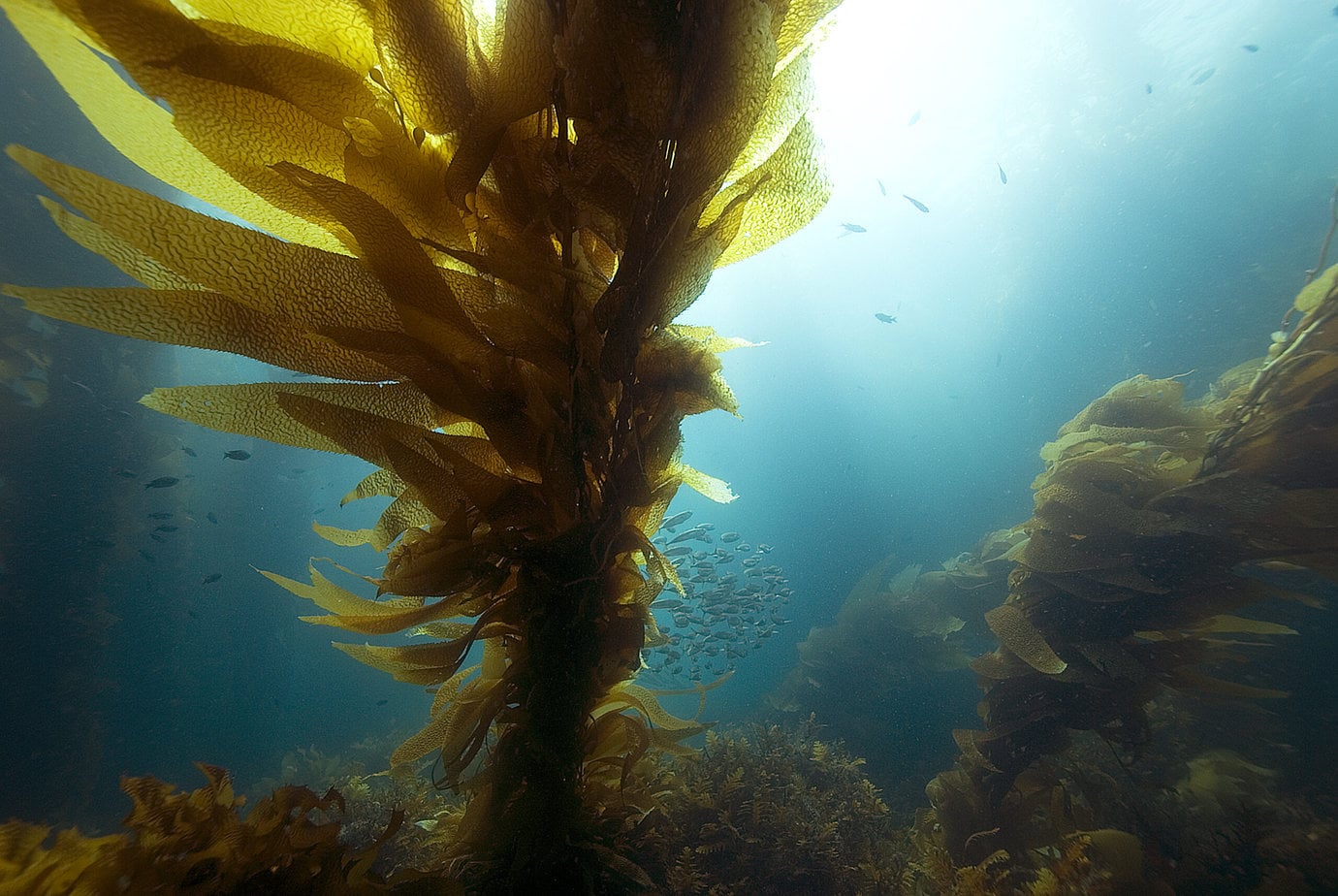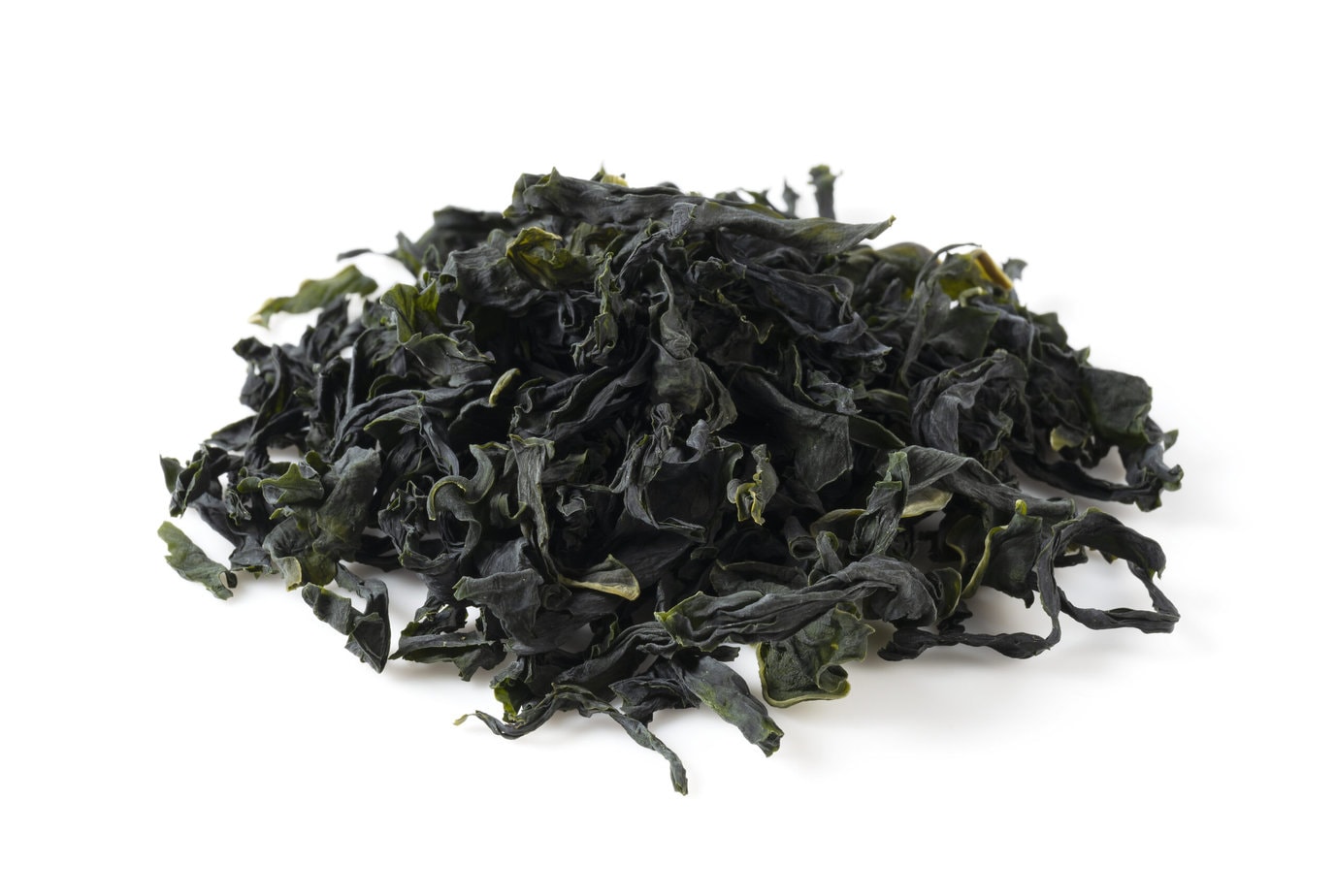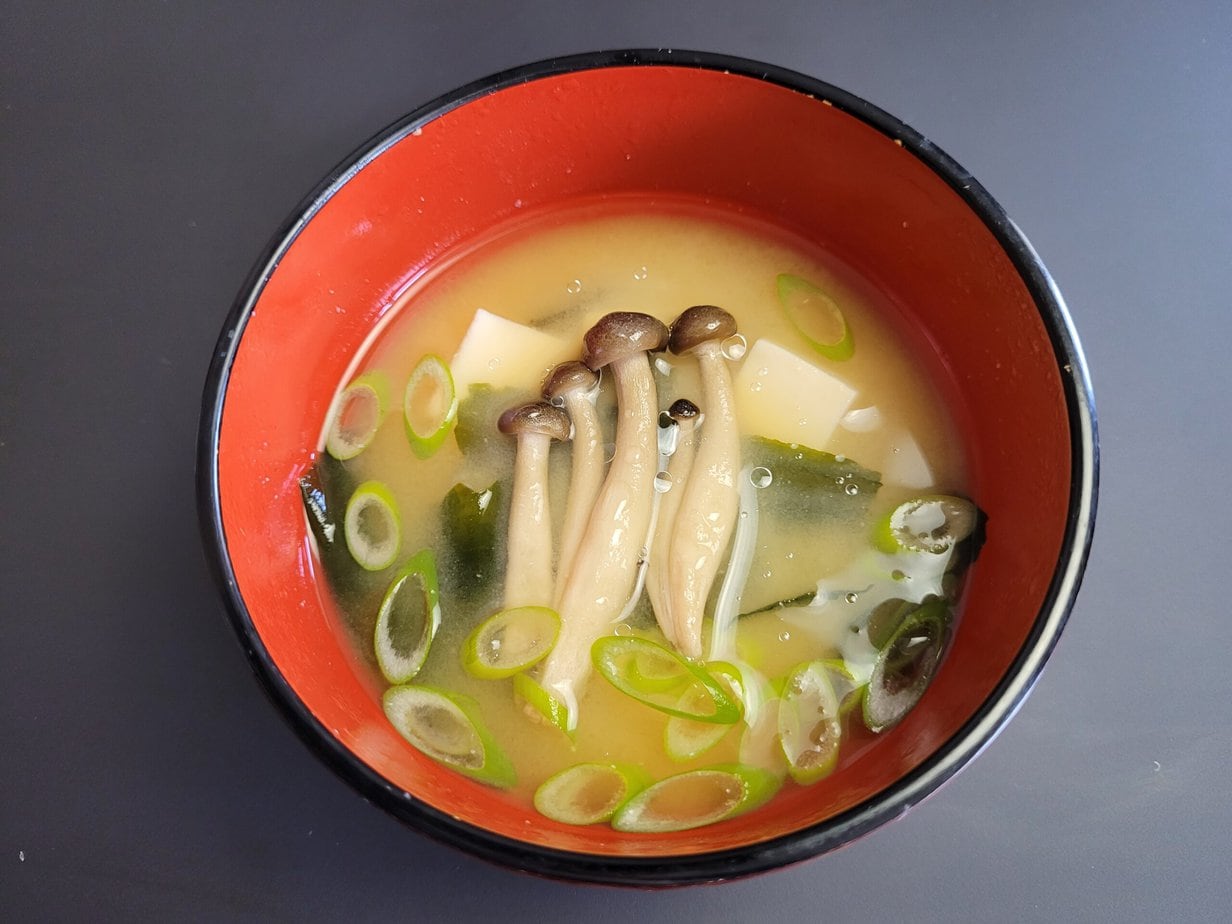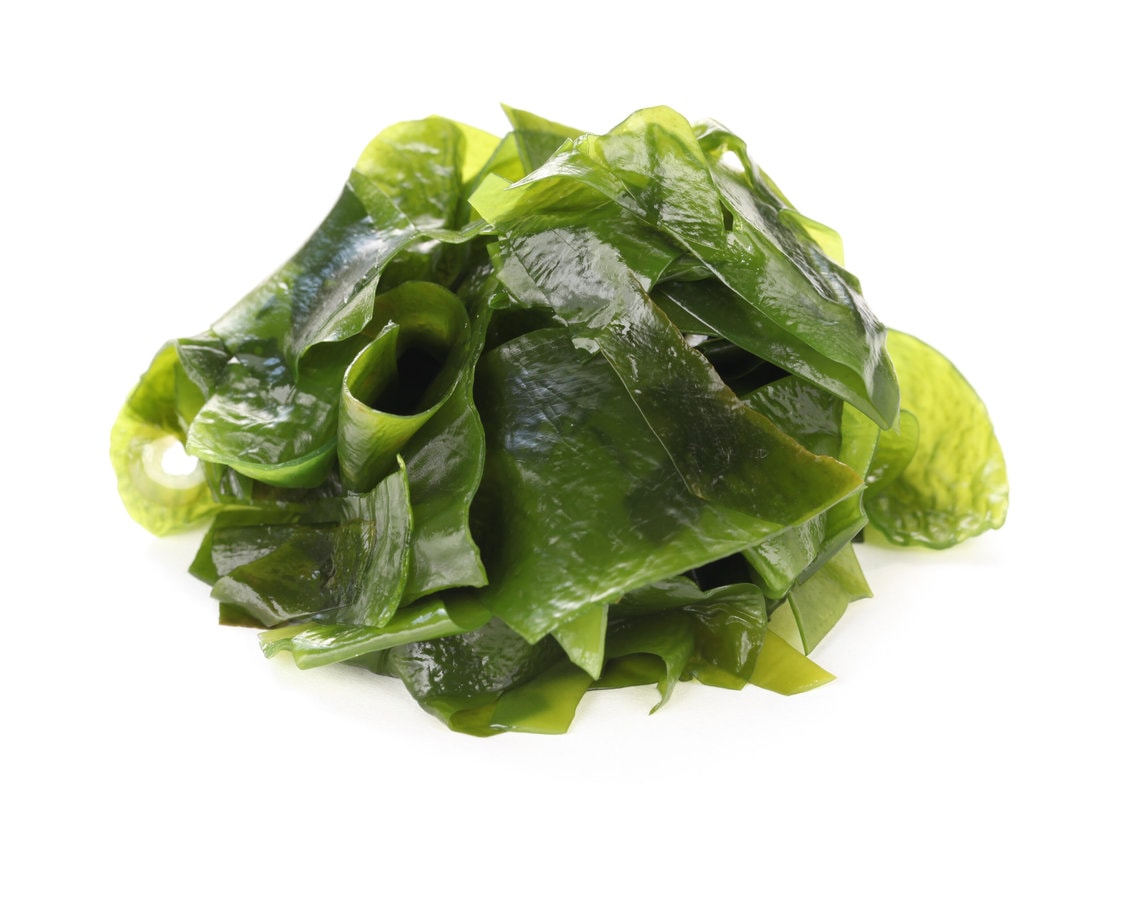Wakame is among the most common edible seaweeds. Widely used across Asian cooking, it often appears in salads and soups, or served alongside seafood.
While it’s also harvested wild in Australia, cultivation is centered in Japan and Korea. Most wakame you’ll find in stores likely comes from one of these two countries. Wakame is an edible kelp.

What is wakame?
Wakame is a sea vegetable—an edible seaweed—widely used in Japanese cuisine and other Asian cuisines. It’s frequently used in soups, salads, snacks, and as a seasoning.
Dark green, wakame is sometimes nicknamed “sea mustard” because it resembles cooked mustard greens, though its mild flavor lacks that pungent bite.
Wakame comes in two forms: dried, which is the most common, and salted. The salted version is sold refrigerated and vacuum-packed.

Wakame vs. nori: what’s the difference?
Wakame is distinct from nori, another variety of dried seaweed commonly used in making sushi. Nori comes as flat, dehydrated sheets, whereas dried wakame usually appears as slightly crinkled strips, a bit like small “sea raisins.”
Before using, dried wakame needs rehydration, whereas nori is typically toasted before being added to sushi rolls or onigiri.
How to use wakame
Always rehydrate wakame before using. Place the seaweed in a bowl and cover with warm water for a few minutes. It will swell substantially, so you may not need much.
Once hydrated and drained, add it to salads and soups, or chop, season, and serve as a salad. The classic miso soup is often garnished with diced tofu, sliced green onions, and small pieces of green seaweed—those green strands are wakame.

How to cook with wakame
After rehydrating, soak it in ice water for 5–6 minutes, then drain and squeeze out the excess water.
To blanch, briefly immerse dried wakame in boiling water, then drain and rinse under cold water before pressing it dry.
Blanching intensifies wakame’s bright green color; it’s often done for wakame salad rather than soup. Finally, the dried strips can be ground in a spice grinder and used as a seasoning for salads, soups, fish, or tofu.
What does wakame taste like?
Wakame, like many sea vegetables, is briny, salty, and umami-rich, with a hint of sweetness. Because it comes from the sea, it tastes distinctly marine without being fishy.
In terms of texture, rehydrated wakame is slightly chewy and silky, with an almost snappy bite. Eaten straight from the packet as a snack, dried wakame is reminiscent of a slightly leathery chip.
Where to buy wakame
Most Asian grocery stores carry wakame, but it’s also available in many supermarkets—often in the international aisle or a dedicated sushi section, alongside sushi rice, soy sauce, and nori.
Alternatively, buy it online. Wakame is typically sold in small packets in its dried form, while the salted variety is found refrigerated—more often in an Asian market than in a conventional grocery store.
How to store wakame
Store dried wakame in its sealed pouch, away from light, in a cool, dry place for about a year. Once rehydrated, it keeps in the refrigerator for 3 to 4 days.
You can also freeze rehydrated wakame; it will keep for up to a year. Salted (refrigerated) wakame should be kept in the fridge and stays fresh for several weeks—always check the best-before or expiration date.

Ingredients
- 1 handful dried wakame seaweed
- 1 large bowl water
Instructions
- Soak the seaweed in water for 12 minutes.
- Drain well, squeezing out excess water. That's it!

